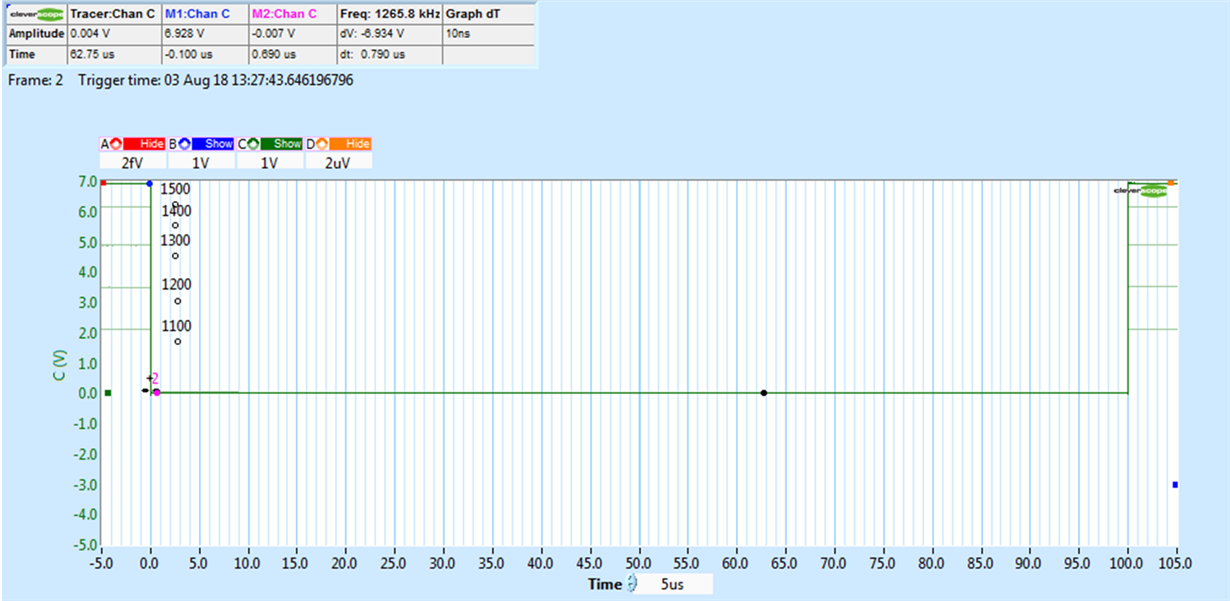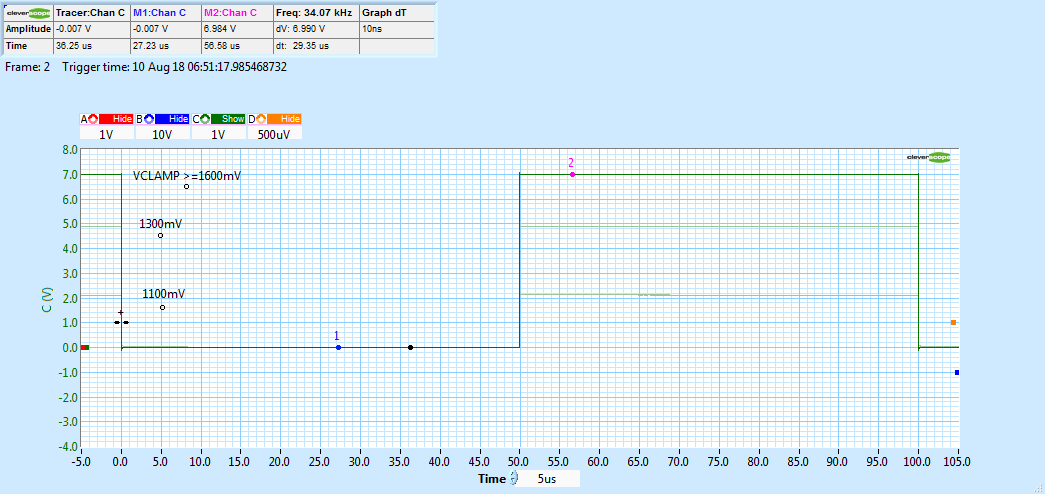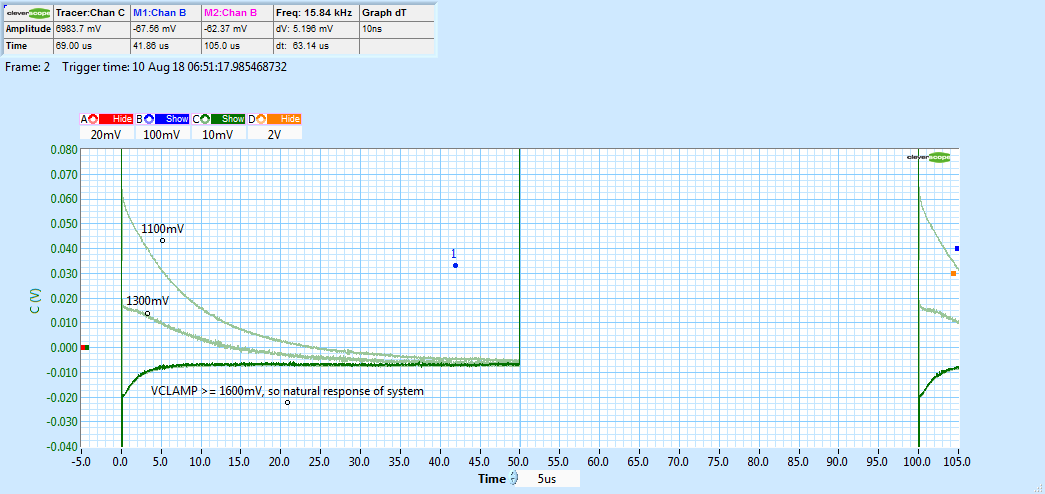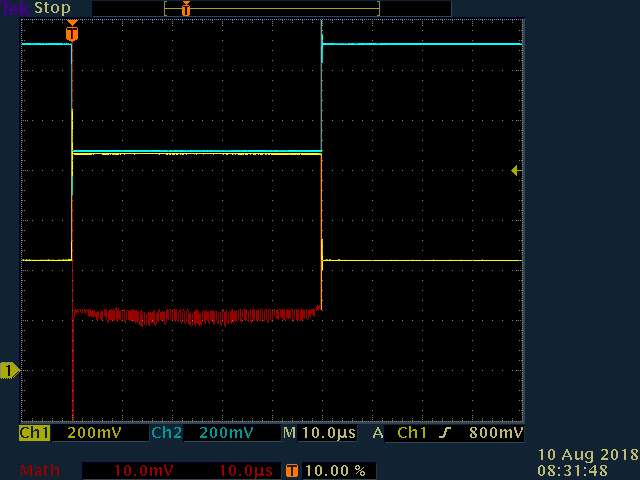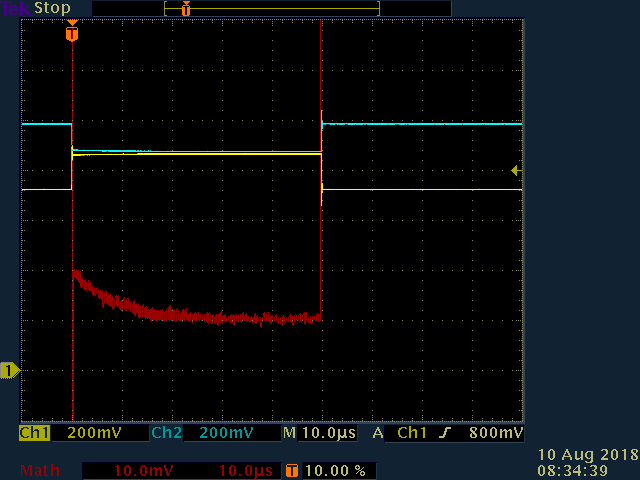Hello,
We are using the LMH6553 to drive the input to an ISL214S50 ADC and clamp the signal so that the ADC input is not over-driven:

VCLAMP is derived from a DAC081C081CIMK with 500R output and 100nF decoupling next to the LMH6553 VCLAMP pin. VCM = 0.94V so the LMH6553 will swing between 0.44V and 1.44V with a 1Vpp input.
The scaling in our system gives an 8V reading when the ADA4817 output is 1V.
I have observed an unusual recovery from a square wave as the clamp level is reduced.
The following display shows the response to an 875mV (=7V on display) unipolar 5kHz square wave as the VCLAMP level is reduced from 1500mV to 1100mV. The high levels are to the left and right of the display and the centre region is the zero level of the pulse. This is what I would expect, so all OK.
But then I zoom on the zero level and see this:
There is an "undershoot" on the step down to zero with a decay time constant of about 9us. As VCLAMP is reduced from 1500mV to 1100mV the undershoot gets bigger, being about 70mV with VCLAMP at 1100mV. 70mV on the display would correspond to about 9mV on the LMH6553 output.
I checked VCLAMP and is it stable, no ripple or transients.
So is it possible that the clamping in the LH6553 can have this recovery from an overload? and get worse as the clamp level gets closer to VCM?
The data sheet spec's overload recovery time as 600ps, so not sure what I am seeing here. Any help much appreciated!
Thanks, Ken


